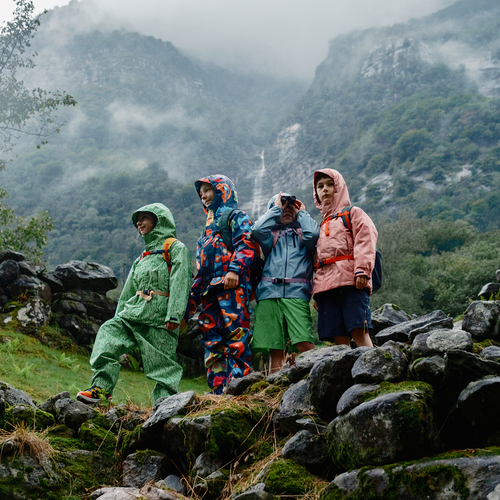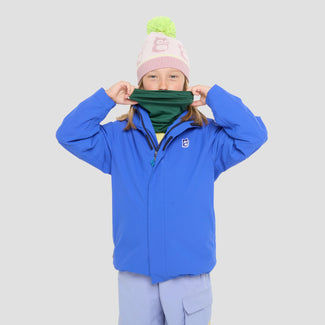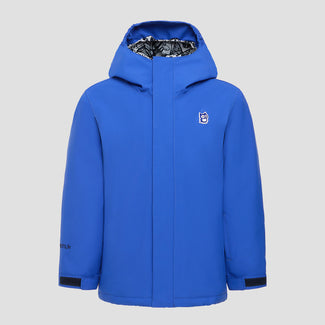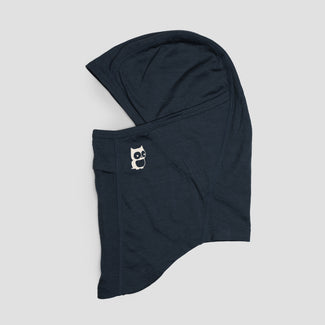Guest author: Astrid Biemann
„Kids, go play outside! The weather is….“ Hm… the weather is… what, exactly? Chilly in the morning, warm in the afternoon? Cold in the shade, while you sweat in the sun? It can be difficult to find that one perfect outfit that works for a whole day in the fresh air. For those days, there’s a magic word: layering. It’s like the skin of an onion: Layers of clothes can be put on, and when it gets warm – just peel one of the layers off your child. This article will show you how that works and what basics are essential.
Practical for every season
The “onion look” doesn’t work only as a perfect skiing outfit for kids. We follow the principle all year long. In summer, my kids often need only a fleece jacket over a T-Shirt in case it’s cool in the morning on the way to school or day care.
For that in-between weather when seasons change in spring and autumn, we layer a rain jacket on top to protect the kids from rain and wind. It’s especially important that the jacket is breathable and waterproof as well as windproof, and can withstand a sudden downpour. On really rainy days, when puddles tempt the kids to jump and splash, waterproof outdoor pants also prevent wet legs.
For a proper winter outfit, you need a warm snow overall, or you can combine a snow jacket and pants with the namuk Overall Connection System to turn them into a snow-proof set. If it gets too warm on the slopes in the afternoon sun, your kids can just stow a piece of gear in their backpacks. That way, they won’t get all sweaty and the winter day can be pure fun.
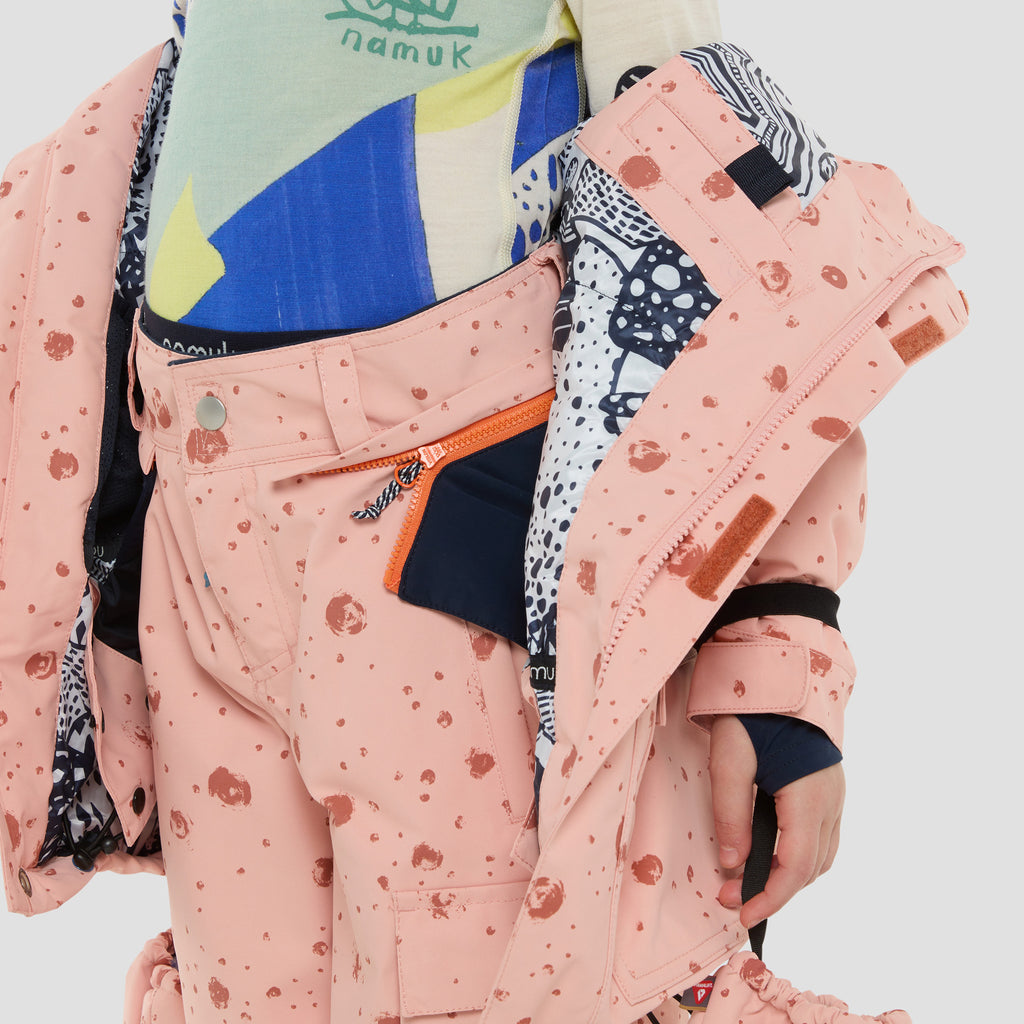
The most important components of layering
1. Base layer
For the base layer, I recommend breathable materials such as Merino wool, which wicks sweat away from the skin and keeps your children dry; for example, a long-sleeved shirt and leggings that sit comfortably on the body and don’t annoy kids with too much extra fabric. Classic sheep wool can be an alternative, but in contrast to Merino wool, it tends to feel scratchy. Another functional alternative to Merino wool is synthetic sports clothing, which also wicks sweat away.
2. Insulating layer
The insulating layer is warming and helps keep in the body’s own warmth. Fleece jackets and pants, for example, are perfect as insulating layers. When shopping for fleece products, look out for sustainable materials like our innovative PrimaLoft® Bio™, because fleece material is often made from synthetic materials that release microplastic into the environment when washed.
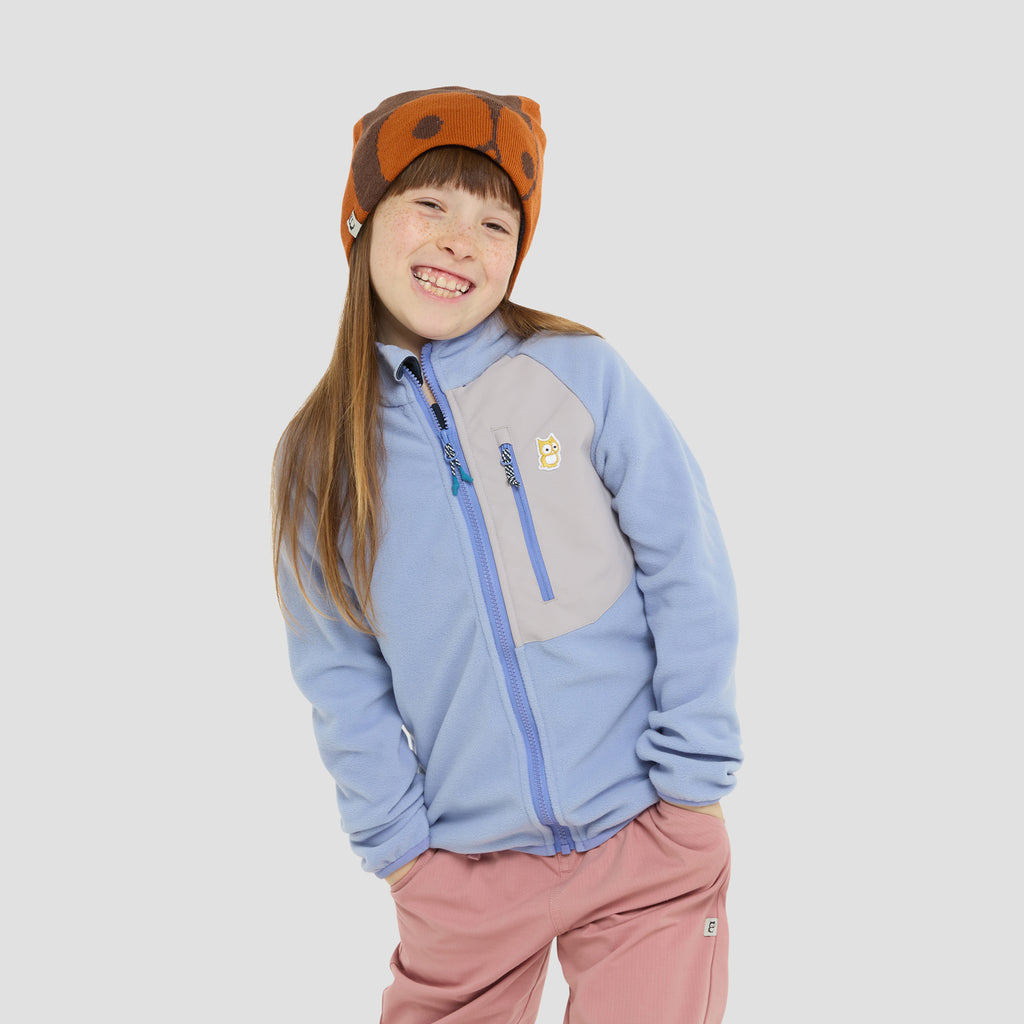
3. Protection from the weather
The outer layer must fulfill several purposes to provide kids with the perfect protection from the cold and damp. Important: It must be wind- and waterproof so that rain and wind cannot penetrate from outside. You can also look for material that is breathable so that moisture – from sweat, for example – doesn’t build up inside, making it feel wet and clammy. That means that rain jackets made from rubber aren’t suitable for the outer layer. Jackets and outdoor pants made from breathable materials are the perfect companions in spring and autumn. In winter, snow jackets and snow overalls are especially suitable.
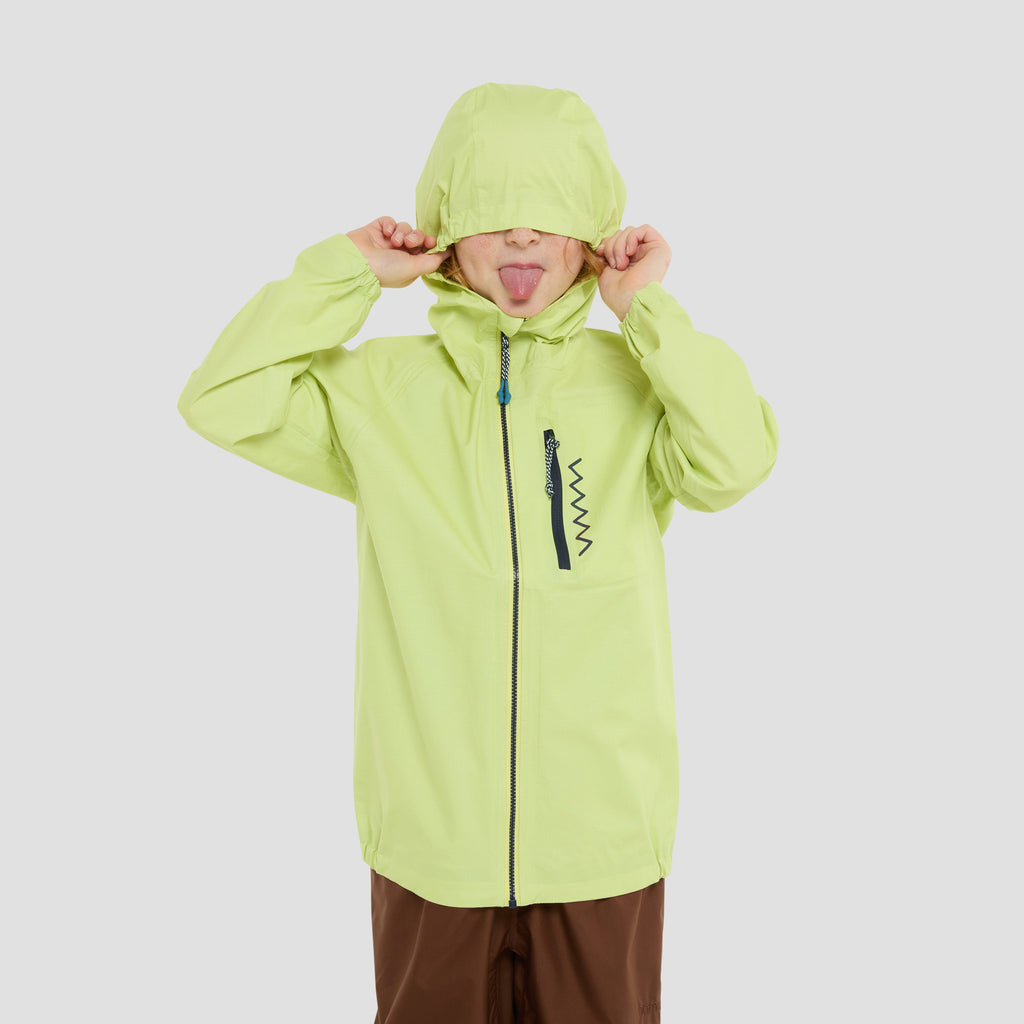
4. Accessories
On cold days, accessories such as scarves, gloves and hats provide additional warmth. In summer, warming items are replaced by caps with UV protection.
5. Shoes
For the feet, layering can work with, for example, two pairs of thin socks worn one on top of the other. Or take somewhat thicker snow socks that keep feet nice and warm. Here, too, it’s important to skip the cotton and instead buy socks made from Merino wool, which keep feet warm. On top – instead of rubber boots – put on (winter) shoes with Goretex, which are waterproof and breathable. Then feet will be sure to stay dry and they won’t cause painful blisters.
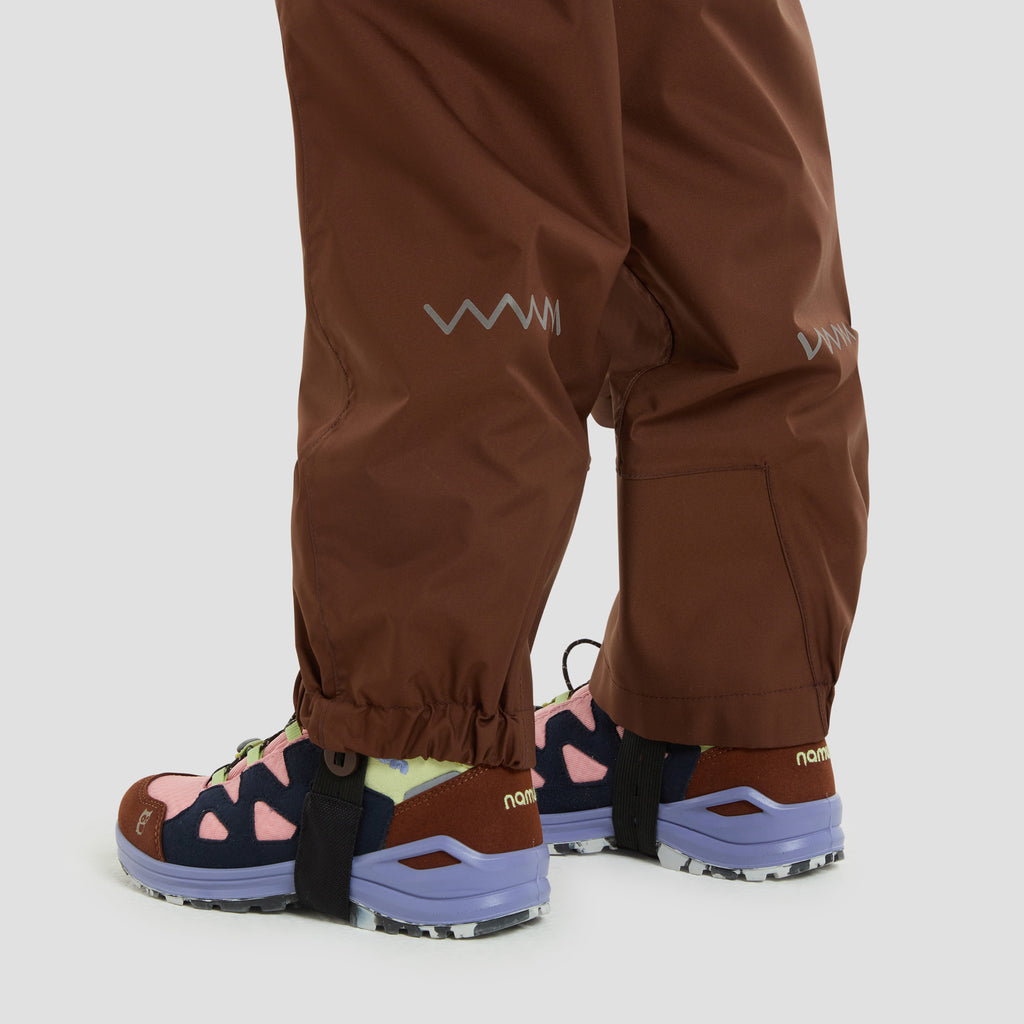
Advantages of layering
One clear advantage to layering children’s clothing is, of course, that the outfit can easily be adjusted to external conditions. Moreover, it’s often more comfortable to put on multiple thin layers of clothing than to wear a thick, padded jacket. Kids want to run, climb, and play, and they need maximum freedom of movement to do it.
And last but not least: If you combine high-quality materials in an outfit, air can circulate under the clothing. Sweat and moisture are transported outside through the breathable materials, while the insulating layer helps retain body heat. This circulation of air prevents kids from getting overheated or too cool. Warm air builds up between the individual layers, preventing kids from freezing – especially if cold air does makes its way into one of the layers. The other layers continue to protect kids reliably from the cold.
Less is more
Layering is not only practical and keeps kids nice and warm in winter. It’s also a sustainable way to use pieces of clothing – because instead of buying new outfits for children every season, parents can keep using the same basic pieces of clothing all year long, simply adding or removing layers. (That not only saves money, but also saves space in closets.)
We keep a lookout for high-quality and long-lasting items of clothing that are as skin-friendly and breathable as possible. For the outer layers, we opt for waterproof and breathable materials so we won’t need to shy away from a rain shower or spontaneous snowball fight. And for us, the inner layers shouldn’t just be practical, but should also look nice. Then, a long-sleeved shirt made from Merino wool can be a perfect substitute pullover in spring, and the fleece jacket can easily take on duties as a summer jacket.
Summary
Wearing clothing in layers is not only super practical, but also looks nice and allows for easy outfit adjustments. It works just as well for kids who freeze easily as for proper athletes, and it works great in every season – dressing like an onion is downright genius! You also save money and protect the environment. If you ask us: It doesn’t get any better than that!


